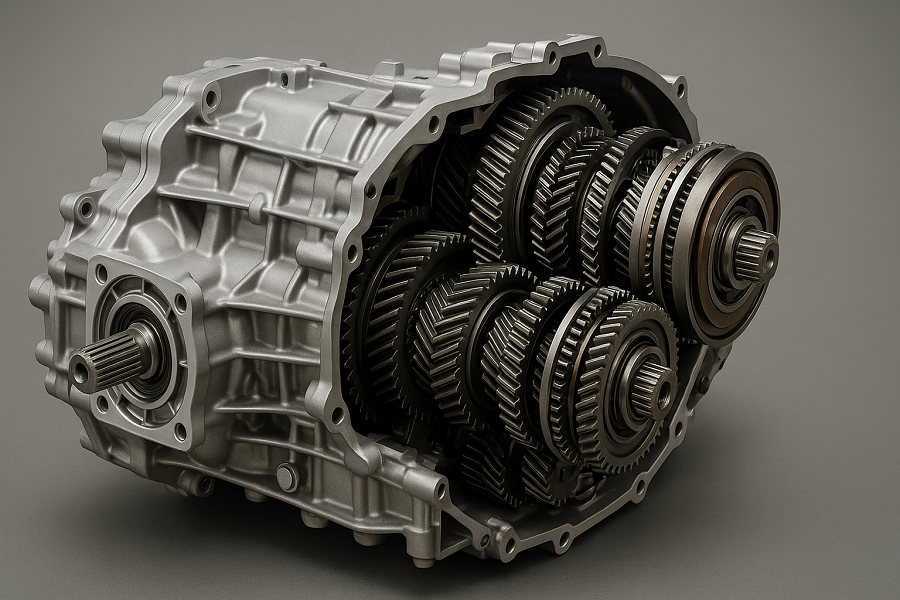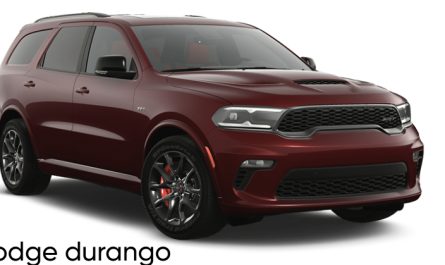1. What Is a Dual Clutch Transmission?
A Dual Clutch Transmission (DCT) is a type of gearbox that blends the best of both manual and automatic transmissions. It uses two clutches—one for odd gears and one for even—to shift gears faster and more smoothly than a traditional system. You get the fuel efficiency and control of a manual with the ease of an automatic. Popular in sports cars and now even daily drivers, the DCT is all about quick gear changes and better vehicle performance. Whether you’re curious or considering buying a DCT car, understanding how it works is the first step.
2. The Basics: How a Dual Clutch Transmission Works
A dual clutch transmission works by using two separate clutches—one handles the odd-numbered gears (1, 3, 5), and the other manages the even ones (2, 4, 6). This setup allows the next gear to be preloaded, making gear changes lightning fast and almost seamless. Unlike a regular automatic transmission, there’s no torque converter. Instead, DCTs rely on precise, computer-controlled shifts that boost driving performance, especially in sports cars and performance vehicles.
3. DCT vs Other Transmissions: What’s the Difference?
DCT vs Automatic Transmission (Torque Converter)
Traditional automatics use a torque converter, which is smooth but not as fast. A DCT shifts quicker and is tuned for performance and fuel efficiency.
DCT vs Manual Transmission
Manuals offer full control but require more driver effort. DCTs provide nearly the same driver engagement without the hassle.
DCT vs CVT
CVTs offer continuous power but lack the “gear shift” sensation. DCTs win in acceleration, driving feel, and performance.
4. Advantages of a Dual Clutch Transmission
- Faster Shifts: Thanks to preloading gears, DCTs shift in milliseconds.
- Improved Fuel Economy: Efficient power delivery means better mileage.
- Smoother Ride: Especially in higher-end vehicles.
- Sporty Driving Experience: You get the thrill of a manual without extra work.
- Less Power Loss: Power transfer from engine to wheels is more direct.
5. Disadvantages and Common Complaints
- Jerky at Low Speeds: Especially with dry-clutch systems in traffic.
- Costly Repairs: Repairs and replacement parts can be expensive.
- Heat Buildup: Poor cooling can shorten lifespan.
- Not Ideal for Off-Roading: Frequent gear changes and clutch strain aren’t suited for rough terrain.
6. DCT Maintenance and Lifespan
A dual clutch transmission’s lifespan depends on driving habits and maintenance. On average, they last 100,000–150,000 miles if well cared for.
- Transmission Fluid: Needs regular changes (every 40,000–60,000 miles).
- Avoid Overheating: Especially in heavy traffic or on hills.
- Watch for Warning Signs: Delayed shifts, grinding sounds, or burning smell.
While more complex than a traditional automatic, proper care can extend a DCT’s life significantly.

7. Who Should Buy a DCT Vehicle?
Ideal for:
- Drivers who enjoy spirited driving
- Highway commuters needing fuel efficiency
- Those wanting a sporty feel without a manual
Not ideal for:
- Frequent stop-go city drivers
- People who keep vehicles for 200k+ miles
- Off-road or heavy-duty driving
8. Dual Clutch Transmission in Trucks & Commercial Use
Though uncommon, some commercial trucks and heavy-duty vehicles now use DCTs for:
- Better fuel efficiency
- Smoother hauling
- Faster gear changes under load
However, durability and cost remain concerns for fleet operators. It’s more common in light-duty trucks and vans.
9. DCT in Motorcycles and Sports Cars
Brands like Honda, BMW, and Ducati use DCTs in motorcycles for:
- Seamless shifting
- Improved rider control
- Better acceleration performance
In the automotive world, brands like Audi, Volkswagen, Porsche, and Hyundai N-series trust DCTs in their performance models to deliver lightning-fast gear changes and peak efficiency.
10. Best Cars with Dual Clutch Transmission in 2025
Budget-Friendly Options:
- Hyundai Elantra N
- Volkswagen Jetta GLI
Mid-Range Picks:
- Kia Forte GT
- Ford Focus ST (used)
Premium Performance Cars:
- Audi S3
- Porsche 718 Cayman
- BMW M2 (auto option)
These vehicles show how DCTs have moved from race tracks to daily drives.
11. DCT Myths & Misconceptions
- “DCTs always overheat.”
→ Modern cooling systems have improved significantly. - “They’re just like automatics.”
→ No, DCTs use a completely different system—no torque converter. - “They’re unreliable.”
→ Poor maintenance is the real issue, not the design.
12. How to Drive a Car with a DCT
- Avoid sudden throttle inputs at low speeds.
- Don’t “creep” like in a traditional auto.
- Shift to neutral if waiting long.
- Understand that DCTs behave differently—give them a week, and you’ll adjust.
13. Conclusion
A Dual Clutch Transmission offers the perfect blend of performance, efficiency, and ease of use. It’s ideal for drivers who want the thrill of manual-like control with the comfort of an automatic. Though not perfect for everyone, a well-maintained DCT can give you years of satisfying, responsive driving. Whether you’re eyeing a sports car, a fuel-efficient commuter, or even a performance motorcycle, DCTs are here to stay—and only getting better.


